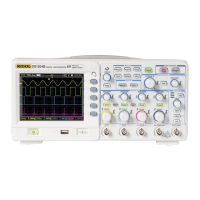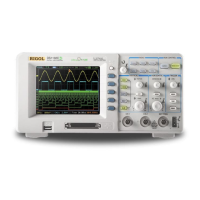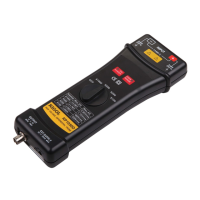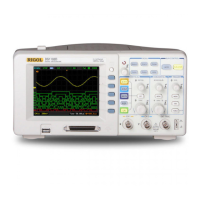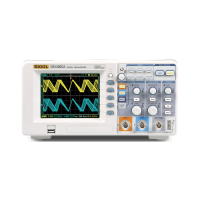Chapter 1 Programming Overview RIGOL
MSO1000Z/DS1000Z Programming Guide 1-5
SCPI Command Overview
SCPI (Standard Commands for Programmable Instruments) is a standardized instrument programming
language that is built upon the standard IEEE 488.1 and IEEE 488.2 and conforms to various standards
(such as the floating point operation rule in IEEE 754 standard, ISO 646 7-bit coded character for
information interchange (equivalent to ASCII programming)). The SCPI commands provide a hierarchical
tree structure and consist of multiple subsystems. Each command subsystem consists of a root keyword
and one or more sub-keywords.
Syntax
The command string usually starts with ":"; the keywords are separated by ":" and are followed by the
parameter settings available; "?" is added at the end of the command string to indicate query; the
command keywords and the first parameter are separated by space.
For example,
:ACQuire:TYPE <type>
:ACQuire:TYPE?
ACQuire is the root keyword of the command. TYPE is the second-level keyword. The command string starts
with ":" which is also used to separate the multiple-level keywords. <type> represents the parameters
available for setting. "?" represents query. The command keywords :ACQuire:TYPE and parameter <type>
are separated by a space.
"," is generally used for separating multiple parameters contained in the same command, for example,
[:TRACe[<n>]]:DATA:VALue volatile,<points>,<data>
Symbol Description
The following symbols will not be sent with the commands.
1. Braces {}
The parameters enclosed in the braces are optional and are usually separated by the vertical bar "|".
When using the command, one of the parameters must be selected.
2. Vertical Bar |
The vertical bar is used to separate multiple parameters and one of the parameters must be selected
when using the command.
3. Square Brackets []
The content in the square brackets can be omitted.
4. Triangle Brackets <>
The parameter enclosed in the triangle brackets must be replaced by an effective value.
Parameter Type
1. Bool
The parameter could be ON, OFF, 1, or 0. For example,
:MEASure:ADISplay <bool>
:MEASure:ADISplay?
Wherein,
<bool> can be set to {{1|ON}|{0|OFF}}.

